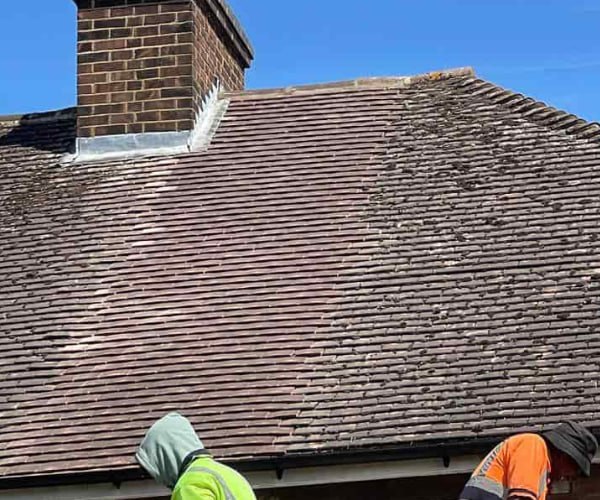The Best Roof Designs for Elderly Homeowners or Bungalows
Introduction
Choosing the right roof design is essential for any property, but for elderly homeowners—especially those living in bungalows—the decision carries added significance. The roof doesn’t just protect the home from the elements; it also plays a key role in long-term maintenance, energy efficiency, safety, and property value.
At WDF Roofing St Neots, we’ve worked with many clients across Cambridgeshire who are looking for roofing solutions tailored to the needs of senior living. In this blog, we explore the best roof designs for elderly homeowners or bungalow properties, focusing on practicality, durability, and ease of maintenance.
Why Roof Design Matters for Elderly Homeowners
The ideal roof design for older homeowners should reduce the need for constant upkeep, enhance energy performance, and support a safe, accessible living environment. As bungalows are single-storey structures, they are more exposed to weather conditions from all angles, which places greater emphasis on choosing a robust and efficient roofing solution.
Key considerations include:
- Low-maintenance materials
- Excellent drainage to prevent leaks
- Energy efficiency to maintain indoor comfort
- Long-lasting construction to avoid repeated repairs
- Safe installation with minimal future risks
Pitched Roofs: A Traditional and Practical Choice
Pitched roofs remain a popular option for bungalows due to their classic design, effective water runoff, and long-term durability. They are suitable for the British climate and offer flexibility in roofing materials.
Benefits of pitched roofs for bungalows:
- Good drainage: Prevents water pooling and reduces the risk of leaks
- Insulation potential: Space for loft insulation improves energy performance
- Ventilation: Adequate airflow reduces moisture and mould risk
- Aesthetic appeal: Matches well with traditional home styles
Common pitched roof types include gable, hip, and cross-hipped designs. These styles offer visual interest while providing structural strength.
Hipped Roofs: Added Stability and Wind Resistance
Hipped roofs are particularly well-suited to exposed areas or locations that experience strong winds, such as open parts of St Neots or rural Cambridgeshire. They slope down on all sides, making them more stable than gable roofs.
Advantages of hipped roofs:
- Improved structural integrity in high winds
- Consistent roofline that supports drainage
- Enhanced thermal efficiency due to reduced surface area
- A clean, symmetrical appearance that suits many bungalow designs
This type of roof is a good option for elderly homeowners seeking a robust design that stands up to extreme weather conditions with minimal maintenance.
Low-Pitch Roofs: A Balance Between Form and Function
Low-pitch roofs are an attractive alternative for homeowners looking for a sleek, modern profile. These roofs are easier and safer to inspect or repair due to their reduced angle.
Why low-pitch roofs may suit elderly residents:
- Reduced risk during inspections or light maintenance
- Modern design for contemporary bungalows
- Compatible with various materials, including tiles, shingles, or metal
While drainage needs to be managed carefully, modern waterproofing systems can ensure these roofs remain reliable over time.
Flat Roofs: Convenient and Accessible
Flat roofs are common on garages, porches, or extensions, and they can be used for entire bungalow designs as well. While they’ve had a mixed reputation historically, advances in materials—such as EPDM and fibreglass—have significantly improved their reliability.
Benefits of flat roofs for senior living:
- Easier access for professionals during maintenance
- Cost-effective and quick to install
- Can accommodate solar panels or green roofing systems
- Modern appearance for updated properties
For elderly homeowners with mobility concerns, a flat roof also ensures that access for professional inspections is simpler, safer, and often less disruptive.
Roof Materials That Support Long-Term Living
In addition to roof shape, the materials used play a crucial role in ensuring the roof is fit for long-term, low-maintenance living.
Recommended roofing materials:
- Concrete or clay tiles: Long-lasting and visually appealing
- Slate: Durable and traditional, though heavier and more expensive
- Metal roofing: Lightweight and highly resistant to moss, mould, and corrosion
- EPDM rubber or fibreglass (for flat roofs): Excellent waterproofing and low maintenance
At WDF Roofing St Neots, we help homeowners select materials that suit both the property style and the owner’s lifestyle needs, ensuring longevity without regular intervention.
Additional Features to Consider
To further enhance the suitability of the roof for elderly residents, consider adding features that improve safety, efficiency, and long-term ease of use.
Helpful additions include:
- Gutter guards to reduce the need for frequent cleaning
- Roof vents to prevent condensation and improve air quality
- Insulated roof systems for consistent indoor temperature
- Solar panel compatibility to support lower energy bills
Combining a smart roof design with the right features can future-proof a property and support independent living for years to come.
Conclusion
Choosing the right roof design for a bungalow or home occupied by elderly residents is about more than just style. It’s about creating a safe, energy-efficient, and low-maintenance environment that supports comfort and peace of mind.
At WDF Roofing St Neots, we understand the unique needs of homeowners across Cambridgeshire. Whether you’re planning a new roof installation or upgrading an existing system, our experienced team will guide you in selecting the best design and materials for your home and lifestyle. Get in touch with us today to explore how we can help you create a roof that’s practical, attractive, and built to last.
Call us on: 01480 776 292
Click here to find out more about WDF Roofing St Neots
Click here to complete our contact form and see how we can help with your roofing needs.

